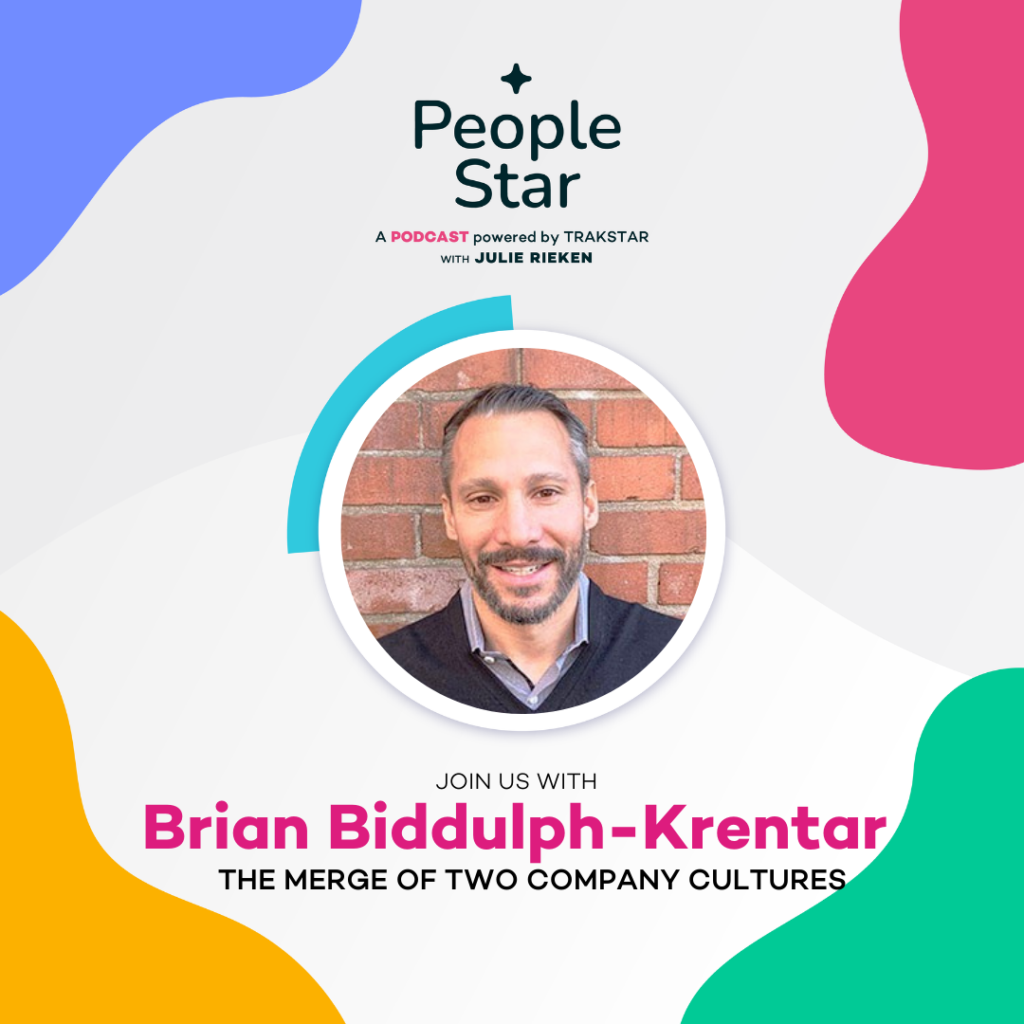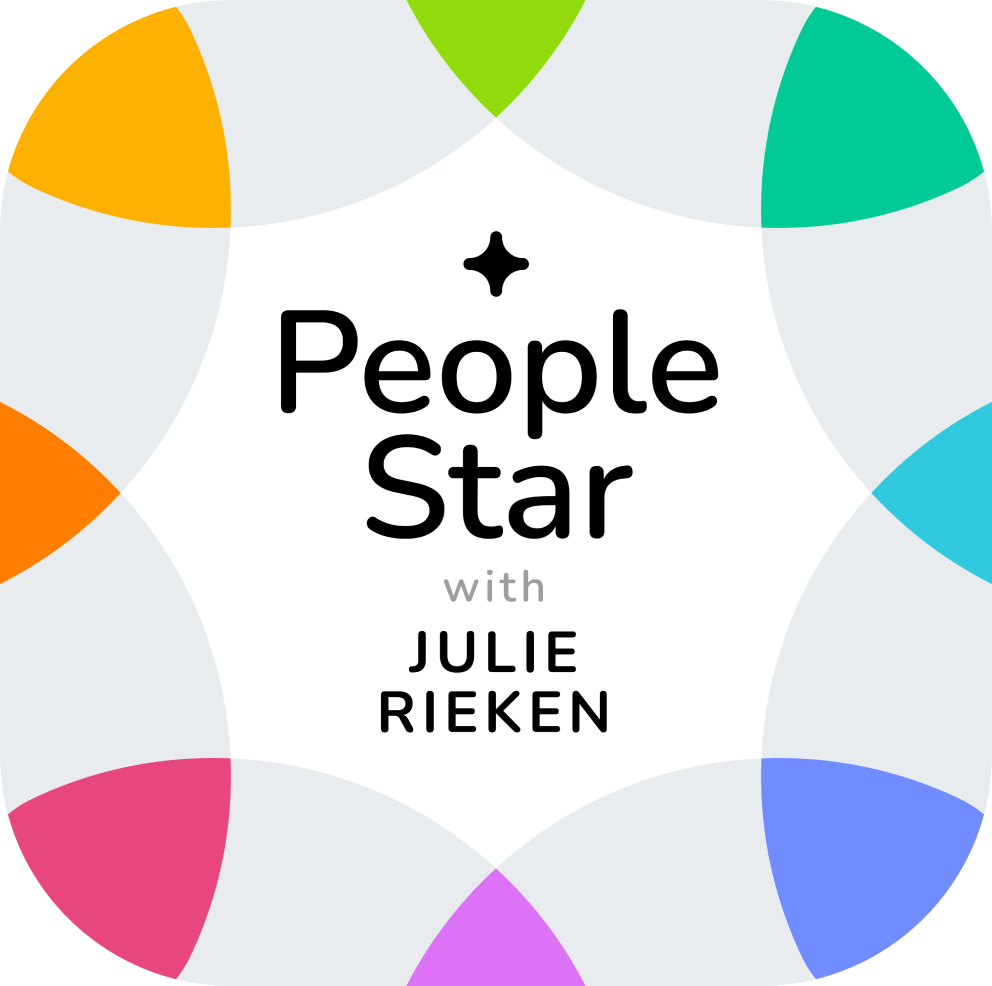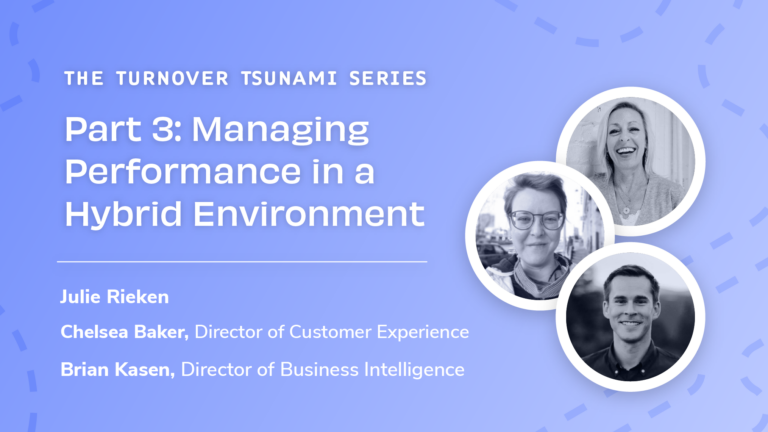PeopleStar Podcast_Brian Biddulph-Krentar: this mp3 audio file was automatically transcribed by Sonix with the best speech-to-text algorithms. This transcript may contain errors.
PeopleStar Podcast Intro:
Welcome to the PeopleStar podcast. We deliver leadership perspectives from industry experts on their people, architecture, routines, and culture as they solve HR's newest challenges. And now your host, Julie Rieken.
Julie Rieken:
Hello, it's Julie Rieken, host of the People's Star podcast, and today it is my pleasure to have Brian Biddulph-Krentar with me. Brian, I got to know each other a few years ago through our portfolio company because I am leading Trakstar, and Brian was leading Magnus Health and we were able to interact with one another on through our portfolio company. And I just have great respect for Brian knowing some of the history of what happened at Magnus and where he is today. So I'm super excited, Brian, to have you here and to have you share some stories with us about leadership. And maybe let's just start with tell us about where you're at today. And then we've got a couple of questions lined up that you've got some great stories to tell us.
Brian Biddulph-Krentar:
Sure. Thank you. Happy to be here. Yeah. So after we sold Magnus in April 2019, I stayed on, obviously, and help with the transition the best as I could and ended up doing some consulting. And I came across a company that is now called SchoolSims, and it was interesting to me because it's a founder who had a great product idea, and I've been there and he wanted some help in turning it into a business and building a team and an organization and a sales and marketing engine and so on and so forth. So I was lucky enough to find him through the University of Pennsylvania incubator called Pennovation. And Ken and I have been working together since about October 2019 now and enjoying some really nice success so far.
Julie Rieken:
That's super cool. I have so much respect for what you did at Magnus, and it's cool to watch your journey now. And in fact, maybe we could just start with our first question. You've given us a little bit of background on how you ended up where you are today. But can you tell us just a little bit more about how you ended up being a leader?
Brian Biddulph-Krentar:
Yeah, it's pretty interesting. So I've started three companies, but I never really realized I wanted to be an entrepreneur. I get asked this question a decent amount now. And thinking back about it, I was lucky enough all the way back to high school to have good leaders and become parts of good organizations, including Cinnabon, my high school job, and my manager and her manager, and the two owners were just people that I wanted to work hard for, learned from, and just succeed, I guess, and make them proud. So it started there in terms of, you know, my hard work, my work ethic. But, you know, going through college, I didn't know that I want to be an entrepreneur. My first job, I didn't know I wanted to be an entrepreneur. But, you know, fast-forwarding a little bit, I worked as a consultant for an early-stage company called Vitalize Consulting Solutions. And I got to work closely with the several founders there, and it just changed the game for me. It made me want to build a company and create a culture and just have a company that was successful for our employees. And that changed everything. So I ended up branching off with their blessing and starting a small consulting company. And then it turned into a software company in health care and then a software company that blended health care and education technology. And it sort of went from there, and now I'm just trying to give back to other founders who have, you know, great ideas and product-market fit and just need the expertise that I've received along the way that I can share with them and impart into their businesses.
Julie Rieken:
That's amazing. A couple of things. Number one, so much respect for any of us that started in food service, I did, too. So from one track to another. So lots of respect for that. And just thinking about your journey as an entrepreneur, that building a company is hard, and here on our podcast, we like to talk about four topics people, architecture, routines, and culture. And one of the things in building a company, that I think is one of the most complicated is building out your org chart and knowing who do you need when you're building something? And what are the roles that you need? I know you've had some experience in this. And in fact, it's a challenge that we're facing here today at Trakstar, and I'm wondering, do you have any good thoughts for us on how you've done this or any stories related to how do you build the right kind of organization and structure it in a good way and find the right roles?
Brian Biddulph-Krentar:
Yeah. So Magnus was a great example for me. So Magnus acquired my company Careflow, and we were a much smaller organization, and we were also direct competitors with Magnus. So initially there was some challenges in terms of culture. But you know, what I really did was just take some time, take a look around, see what was working and maybe what needed some tweaks. And we tried to identify in each area, you know, a couple of problems to solve at a time. So, you know, maybe we would make a list of 10 problems and say, you know, these are the two that will have the biggest impact and we're going to try to fix those right now. And the story that relates the most to the question, I think is, just completely reorganizing our client support team, so Magnus was sort of, everyone was lumped together and the people who did onboarding, the people who did helpdesks support, the people who did what we ended up calling clients success, renewals, was more on the sales side than the client experience side. So we just took a look at that and said, where are the strengths lie with who we have and how can we break this up? We were inundated with support calls and support emails, and we had such a huge backlog and they were all, you know, pretty related problems. So we're like, we can fix this if we do something. What should we do? So it was our biggest team and we decided to split it up into an onboarding group, a success group, and a support group. It was most important was starting proactive outreach process, which really helped us to reduce incoming cases because we were communicating with our clients on a regular basis and rather than them just submitting a ticket. And then that's our really only communication because we just didn't have the time to have a more deep and thorough and meaningful conversation with them, we were able to do that, and that reduced tickets, it allowed people to have a better understanding of the product and use it to its fullest capability and also in the way that we designed it. We found out actually that that was a reason for so many tickets. People were using the system the way that they wanted to or the way that they felt it should be used, when it may not be what we consider best practices. So, you know, reorganizing the client experience team was huge for us. But I think generally what led us there was just looking at the top three problems in the company and seeing that it came down to, you know, getting people in the right seats, utilizing their strengths and, you know, making sure that they were working on the right things. Instead of being reactive, we became much more proactive.
Julie Rieken:
That is a fantastic story. When we think about our companies, sometimes those are things that we're not entirely sure how to reorganize. And now I'm thinking about your structure for your client experience team, where you had onboarding, success, and support, and I don't know if you know, but that's how we have ours organized now, too. And I bet that's, I bet that comes from learnings from you.
Brian Biddulph-Krentar:
I think there might be some coincidence there yeah
Julie Rieken:
That's awesome. Well, …
Brian Biddulph-Krentar:
Yeah, we.
Julie Rieken:
Too.
Brian Biddulph-Krentar:
That's good to hear. Yeah. You know, it's not a, you know, beautiful thing to change. How do we reduce support tickets? But it ended up becoming a nice model for our mutual portfolio company and just worked really, really well for us.
Julie Rieken:
Super great. Brian, I just have one more question for you for today, because that story I think, is really enough for people to digest. I mean, the act of how do I take a department and organize it in a way that responds to customers and plays on the strengths is something that I think leaders think about all the time. Which leads me to this last question. You probably, I'm going to make a guess that you have, when you were making your list of what are the things I fix and do on the top 10 things, that stuff was rattling around in your head for quite some time, probably in the mornings and the evenings, and you're thinking, how do I do this? What are my strengths? How do I prioritize? Maybe I'm making an assumption, but I know that would rattle in my head for a long time, when you want to get your head out of the game, how do you do it?
Brian Biddulph-Krentar:
Yeah. This is something that was really hard to learn as an entrepreneur, I think. You know, we all struggle with it, just finding balance. And I actually, I was a programmer for a while, and I always knew that the best way, if I was stuck on a problem, the best way to get to a solution was to just literally get up from my desk, walk around, go do something else and come back with a fresh perspective. But I never took that information and used it as an entrepreneur in my work-life balance, for years was terrible. And despite the fact that I have a wife and two kids, so, you know, learning how to do that is critical. And it took me a long time. But that is how I get my head out of the game. I have to be present when I'm with my wife, with my kids, you know, the best I humanly can. And, you know, realize that you know, they want my maximum effort, my maximum attention, just like my company would need it. But I still have to do things for myself. And I love to play soccer. I love to play sports. I'm in my late forties now, which is hard to say out loud, but I'm still out there playing soccer a couple of times a week. And I love that. And now I coach, I coach my kids playing soccer. So that's part of that work-life balance and making the time. You know, when you're an entrepreneur, you're traveling a lot. I make sure I'm home on Saturdays and do the best I can to be home on Wednesdays or whatever the practice night is. So I'm lucky enough to be able to organize my schedule like that now. So those are really important things for me. And that's what I do to break away and come back fresh to the company and also to be there for my family and friends, too. It's critical as an entrepreneur, and I just would encourage anybody to just make the time and make the effort and realize that that is as important or more important than what you're doing, because your family and your friends will be there forever and the company hopefully will get acquired or you'll move on to something bigger and better. But family and friends last forever, so.
Julie Rieken:
That's such good advice. And it is hard to get your head out of the game. And it sounds like you're making really deliberate moves to do that, to stay healthy, and that is super cool. So, Brian, this has been awesome. I think we've learned a couple of super cool things from you today, how you ended up where you were, how you organized your client experience team into three different groups to help provide a better customer experience, and how you get your head out of the game. And it's been delightful.
Brian Biddulph-Krentar:
Well, I appreciate you talking to me today, Julie! It's great to see you. And, you know, it just, anytime you need me, let me know.
Julie Rieken:
I'm sure we'll have you back as a return guest. So thank you for today and I'm going to go ahead and sign us off for today. Thanks!
Brian Biddulph-Krentar:
Sounds great. Thanks, Julie!
PeopleStar Podcast Outro:
Thanks for listening to the PeopleStar podcast. For the show notes, transcript, resources, and more ways to get a seat at the table, visit us at Trakstar.com/Podcast.
Sonix has many features that you’d love including powerful integrations and APIs, automated subtitles, share transcripts, collaboration tools, and easily transcribe your Zoom meetings. Try Sonix for free today.




